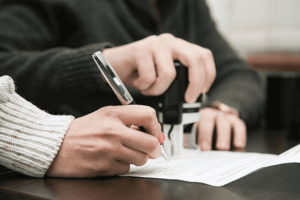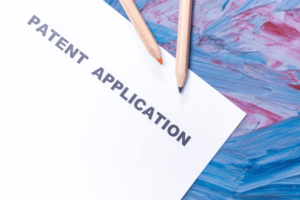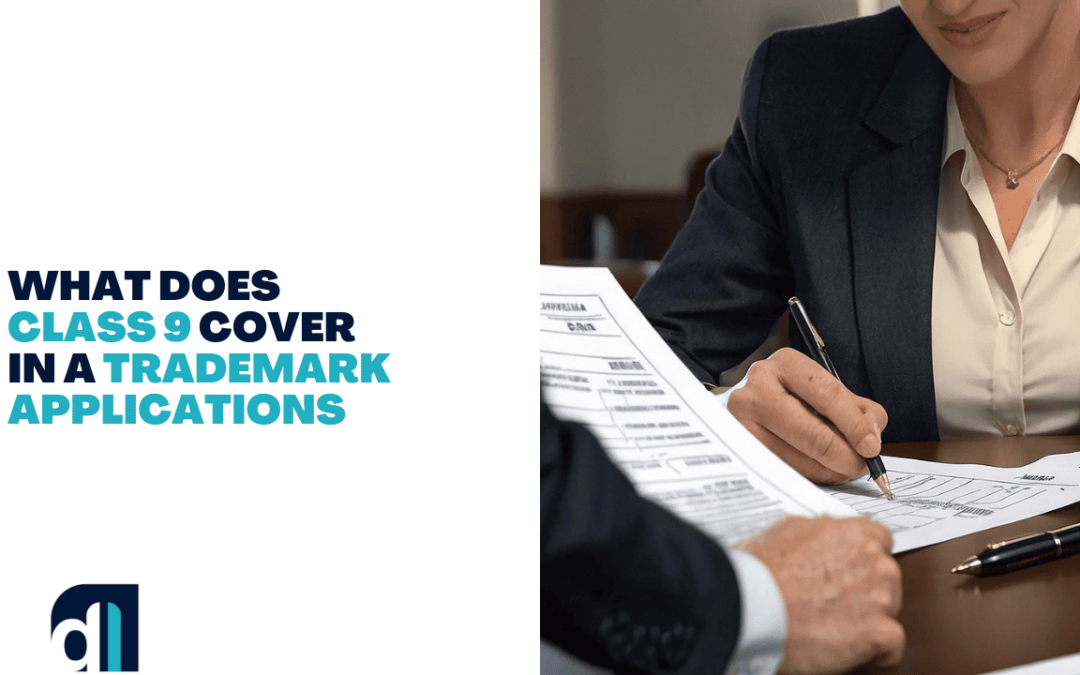When it comes to the issue of trademarks, it is vital to know something about the classification of goods and services. Trademark classes organize related goods and services for a better understanding of the rights of a specific mark.
Trademark class 9 is one of the largest classes comprising items such as technology, electronics, and scientific instruments. In trademark registration, classes group goods and services to define a mark’s protection.
This post will explore what Class 9 entails, why it is important, and how one can wade through the issues that arise out of the class.

Trademark Classification System
The Nice class 9 includes an international classification for marking goods and services into 45 classes for trademark purposes. It assists companies to establish the extent of their trademark protection by stating the market that their products or services are in.
Electronics and optical products, scientific equipment, and other similar products are the more important products in Class 9 of this system.
This class includes all sorts of products starting from those that can be used by an average customer and ending with scientific equipment.
It can be a guarantee that trademarks are properly classified to register and get the right protection within their respective market segments.
What Does Class 9 Cover?
Class 9 is very general and contains many goods that are relevant to many fields of technology and science.
Some core categories are:
- Electronic Devices
Electronic devices like mobiles, tablets, and laptops.
- Scientific Equipment
Apparatus such as microscopes, thermometers, and laboratory weighing balance.
- Audio-Visual Equipment
Cameras, televisions, and sound recording types of equipment.
- Software and Apps
Software packages, application software, operating systems, and other downloadable software.
- Security Equipment
Burglar alarms, security cameras, and fire fighting equipment and devices.
Examples of Products in Class 9
To illustrate, trademarks for well-known electronics brands such as “Apple” and “Samsung” fall under Class 9 for their smartphones and computers.
Similarly, companies developing downloadable e-books or virtual reality software also utilize this classification. Class 9 even includes unique items like magnetic data carriers, demonstrating its vast scope.
How Class 9 Is Different From Other Classes
It is therefore very important to understand the differences between Class 9 and other related classes to enable correct classification to be made. For instance:
- Class 38
Class 38 is related to phone networks and internet service providers while Class 9 is related to physical communication devices.
- Class 42
Class 42 covers technological services such as software or IT consulting as opposed to the software themselves.
These differences call for a realization of the fact that it is essential to know the nature of your commodity before filing.
Why Proper Classification is Important for Class 9 Applications
It is important to correctly classify goods under this class to ensure the prevention of infringement of intellectual property rights.
Misclassification could lead to application rejection attracting additional costs for patents or increased chances for legal battles over infringement.
Due to the fact that Class 9 is so broad, it is crucial to conduct a search on existing trademarks while giving comprehensive descriptions of the goods to ensure that there will be no clash with other filings.
Trademark attorneys bear much responsibility for accuracy as they use their knowledge to work through the classification system efficiently.

Tips for Registering a Trademark in Class 9
Before filling out a class 9 trademark application you should follow these important steps to avoid any type of inconvenience:
- Do a Thorough Search
When preparing to file your trademark application, it is necessary to conduct a search to find out whether the mark you want to use is available within Class 9.
This step assists in the determination of what may infringe on other existing trademarks, to avoid the rejection of the application or facing legal suits.
Some of the available tools to help in this process are the Trademark Electronic Search System (TESS) by USPTO or even hiring a professional to do the comparative trademark search.
- Be Specific in Descriptions
When giving details about your goods in the application, give detailed information as to what the goods are, what they do, and what they are meant for.
For instance, instead of writing “software” write “downloadable software for data analysis in the healthcare industry”
Accurate descriptions not only help to classify the mark correctly but also make your application more solid as the scope of protection of your mark is stated comprehensively.
- Seek Professional Guidance
The process of registering a trademark is not always easy, especially when it comes to a large class such as Class 9. Seeking advice from a trademark attorney will assist to prevent common errors, classify the trademark correctly, and address all related procedures.
A trademark lawyer is more likely to ensure registration success, and this will save the time and money that you would spend doing so.
Challenges and Common Pitfalls
There will be some difficulties that will come your way, you should be aware of:
- Overlap with Other Classes
Class 9 is very broad and often there is confusion while classifying the goods because its range often overlaps with other classes.
For instance, tangible goods such as computers and smartphones belong to Class 9 while the services that relate to the hardware such as consultancy on IT or software development belong to Class 42.
Likewise, some of the products that may be classified as Class 18 may include protective cases for electronic gadgets.
It is important to understand these distinctions so that one does not get it wrong and this may lead to application rejection through office action or loss of rights in certain fields.
- Emerging Technologies
Technological advancement has made it quite difficult for trademark classifications to contain products that are in the market in the shortest time possible.
For instance, an AI tool or blockchain software can fall under different categories, and it becomes difficult to decide on the major category.
Classification guidelines are revised from time to time by trademark authorities and thus the a need to follow such changes to the letter.
- Inadequate Descriptions
Another mistake that many sellers make is to give too much or too little information about the product they are selling.
For instance, categorizing an item as “software” without elaborating on its functions or its application may cause a lot of trouble or rejection.
Descriptive and specific is also useful in classification; it also enhances the application since it gives the bounds of protection.
- Lack of Research
A lack of trademark search before filing for registration can lead to a clash with existing trademarks.
This might cause some legal problems or require rebranding, which is always time-consuming and financially expensive.
Enlisting a trademark attorney can help streamline the process, minimize errors, and increase your chances of success.
Since you have Drishti Law by your side, there should be no cause for concern when it comes to registering and protecting your trademark and thus establishing your business in the saturated market of food production.
Please feel free to contact us today at 773-234-1139 for a free consultation to find out how we can assist you in achieving your trademark objectives.

Sahil Malhotra
Sahil Malhotra is an Intellectual Property Attorney, who founded Drishti (“vision”) law because of his vision in protecting dreams and ideas.
He provided individuals and small businesses with an opportunity to enhance their IP’s value by helping them register trademarks and successfully argue against office actions. In addition to his training and experience, he has been deeply involved in the multifaceted IP portfolio at UIC and continues to be associated with IP organizations and conferences.
To know more about Sahil Malhotra — Click Here
You may follow Sahil Malhotra on Facebook: Sahil Malhotra and on Instagram: @Sahil Malhotra

